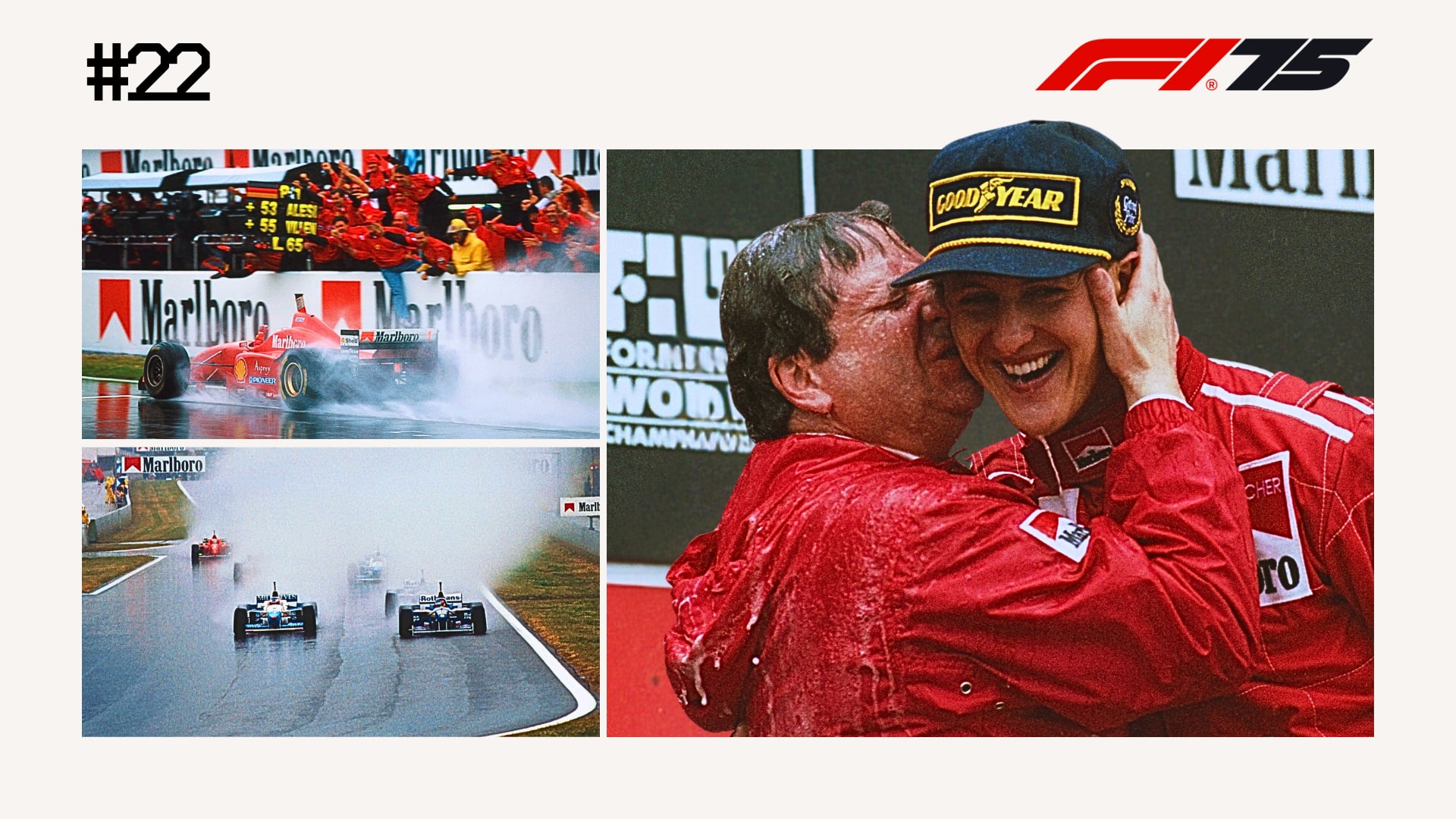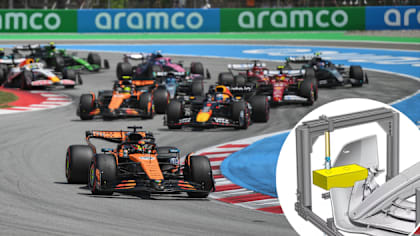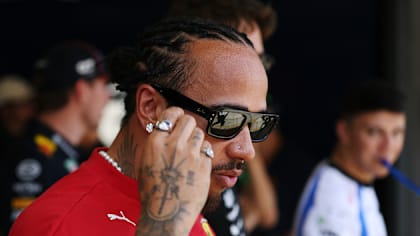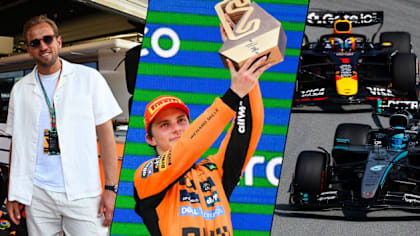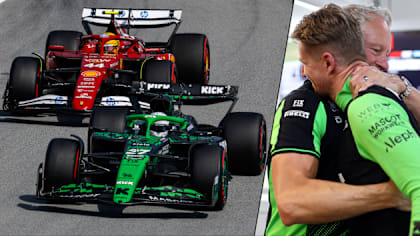
Feature
'I feel like James Bond' – Maylander on what it's like to drive the Aston Martin Safety Car at full throttle
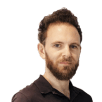
Share

Bernd Maylander is late getting to Baku ahead of the Azerbaijan Grand Prix. I meet him on Saturday morning, a few hours ahead of Free Practice 3, the German having just arrived from his overnight flight.
“My kids went to school yesterday,” he explains – adding with a chuckle: “A lot of emotion!”
Bernd leads me through the FIA garage at the Baku City Circuit, past engineers huddled over their laptops, through a small doorway, and then boom – a phalanx of green hits me as I find myself in the holding bay for the Aston Martin Safety and Medical Cars next to the pit lane.
READ MORE: Experienced hands or a rapid rookie – who’s in the frame for the vacant Sauber seat?
Resplendent in ‘Aston Martin Racing Green’, there are four machines in total in the garage – a pair of Vantages, emblazoned with the name of Bernd and his partner in crime (or rather safety) Richard Darker, the FIA’s Formula 1 Technical Assistant, plus two Aston Martin DBXs, the larger machines serving as the Medical Car and ready to carry Dr Ian Roberts to the scene of an accident. One main car for each, plus one back up.
Aston Martin provided their first Safety Car for Formula 1 for the 2021 season, the same year as the marque returned to the sport as a constructor after a 61-year hiatus.

The Safety Car appeared at Austin last time out at the US Grand Prix
Fast forward to 2024, and the latest edition of the Vantage has seen power and torque hiked by 30% and 15% respectively over the previous model, giving Maylander 665PS and 800Nm to play with. That helps him accelerate from 0-60mph in just 3.4s. Fun stats, sure – but when it comes to safety in F1, marginal gains can be all-important.
“It’s fantastic – it's a partnership,” Maylander says of the collaboration with Aston Martin. “The cars are great and there's a lot of history behind the brand.
NEED TO KNOW: The most important facts, stats and trivia ahead of the 2024 Mexico City Grand Prix
“It’s absolutely a beautiful car – but Aston Martin have done a proper job. We worked together in the end, especially in the first year when Aston Martin had to learn a lot how to build a Safety Car, FIA-wise what we needed from the extra systems, what they have to put onto the car.
“For sure the old Vantage was a sporty car, but the new one is even more sporty. It's a new design, the suspension is different, the brakes, the engine is more powerful. So it's a fantastic car – I really like to have my red one and also to have my green car!”
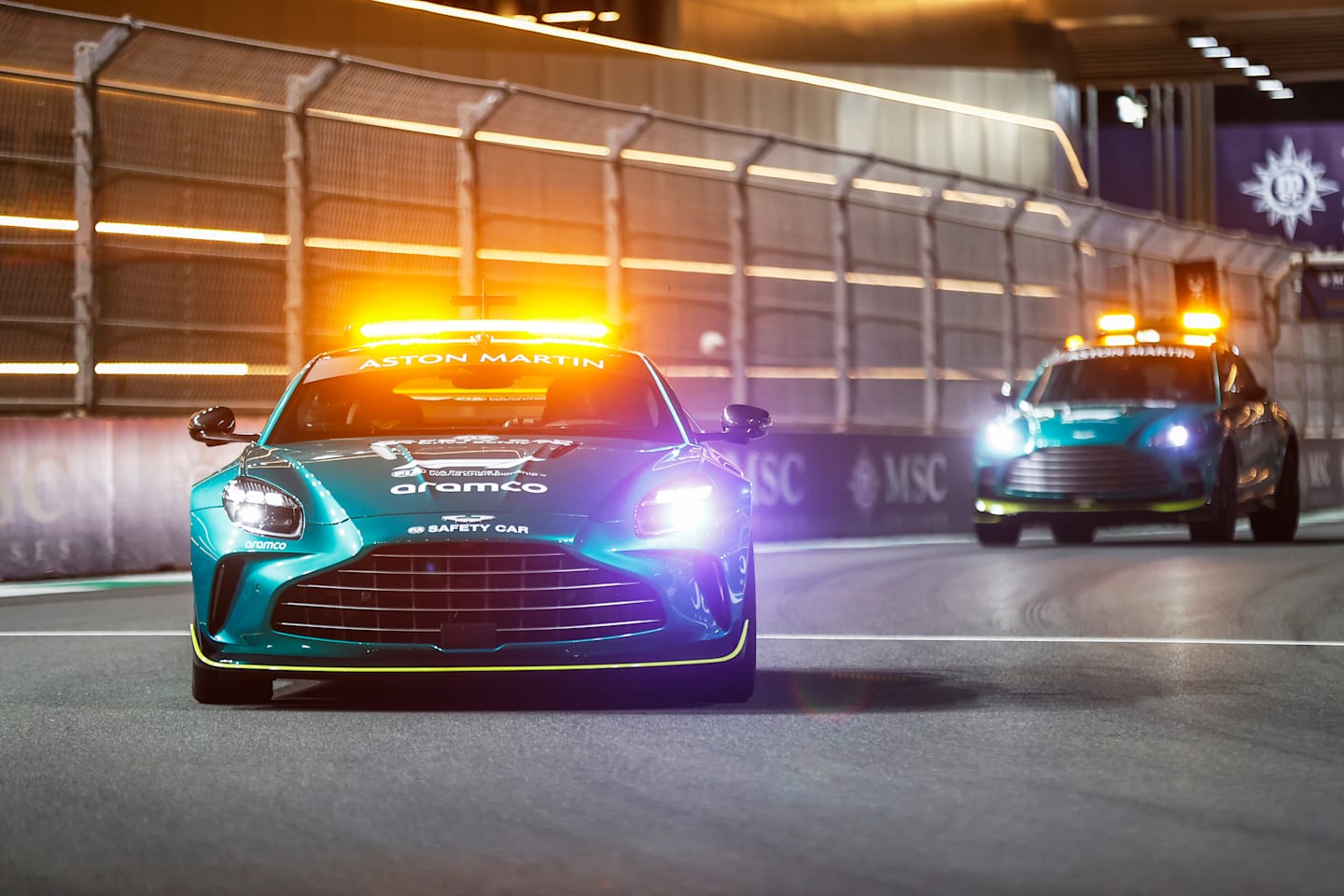
The Aston Martin Vantage Safety Car in 2024, which has been hiked up since the company provided their first Safety Car for F1 for the 2021 season
Maylander knows a thing or two about the demands that a Safety Car has to be ready to deal with. He’s been a permanent fixture as the FIA’s Safety Car driver since 2000, when then FIA race director Charlie Whiting asked jobbing racing driver Maylander – fresh off the back of a Le Mans class podium in a Porsche 996 the year before – if he would be up for the challenge of driving the Safety Car.
“I got the offer from Charlie Whiting,” he recalls, smiling. “'Bernd, do you want to drive the Safety Car?' I said, 'Okay yeah, well I think I can drive' – but the rest for sure you have to learn because you have to approach things completely in a different way to a race. Here, you never win a race and you never take the chequered flag! Sometimes you're not even allowed to drive quick because there's a reason for that, and that's what you have to learn.
“For sure you have to drive sometimes on the limit, and you have to be able to handle this kind of limit,” he adds. “But that's not the most important thing. I think the most important thing is to bring by communication the right information to race control so that they can have one point, me as a driver, on a track to get this information.
“Then they're listening also to the race drivers and in the end, they make a decision out of all this information and that's the really important, tricky, thing – to give the right information.”
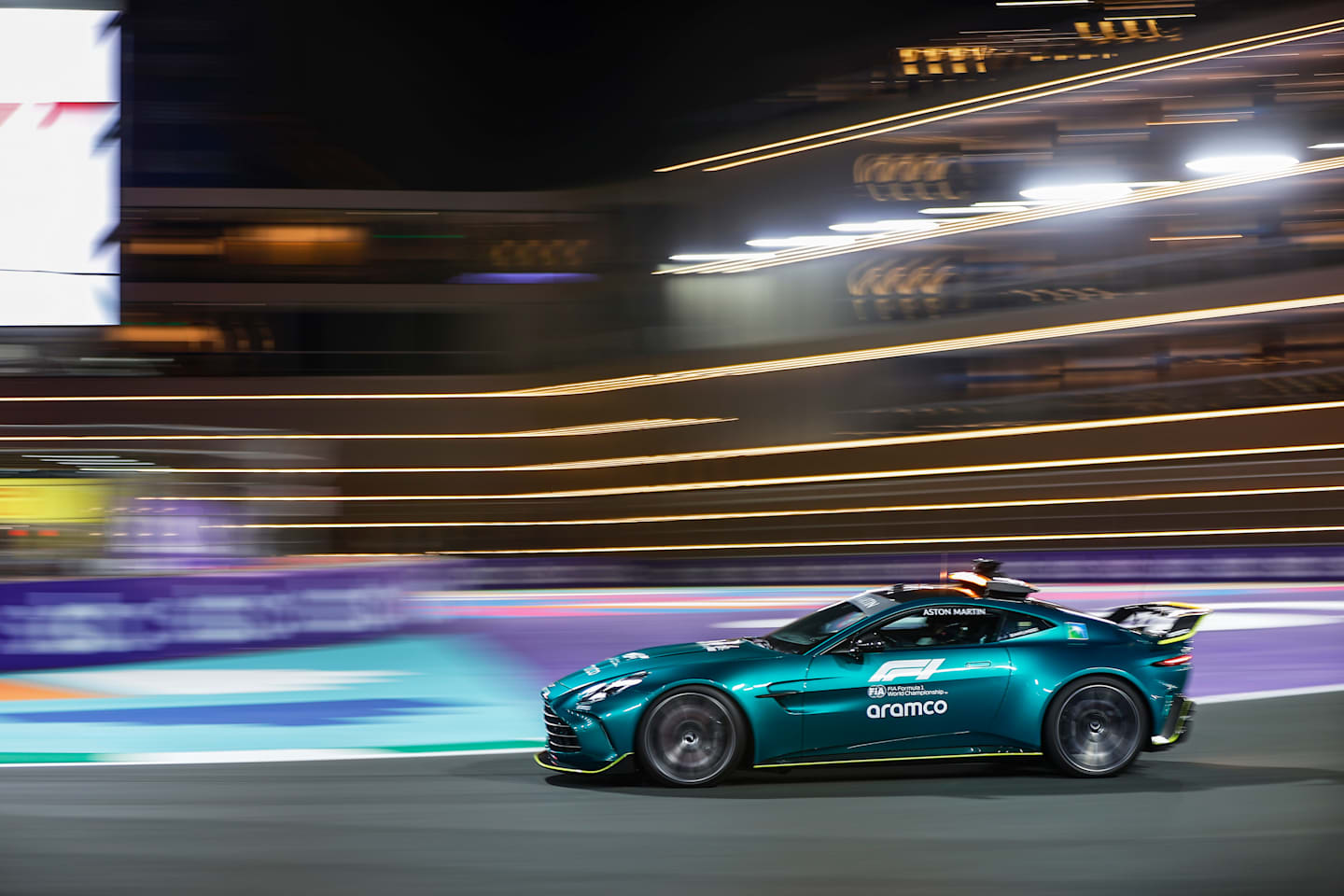
The Aston Martin Vantage Safety Car has a plethora of equipment to help Maylander
Back when Maylander started driving the Safety Car, a radio and a set of flashing lights were about all the systems he had on his car. Nowadays, though, the systems aboard the Safety Car allow Maylander and Darker to be as up to date as possible with what’s happening out on track.
“Nowadays, you have two radio systems, you have two extra TV screens inside, where you can follow the race live,” says Maylander. “You have the GPS mapping inside where we can see all the cars around the track; if there's an incident, you can see the area goes to yellow by corner number.
“You can see the impact, so you can see the G force of the impact. Maybe it's not so important for the Safety Car, but it’s good to know. It's more important for the Medical Car for sure, because there are the doctors inside. So we have a lot of extra equipment that we're using in Formula 1, Formula 2 and Formula 3.
BEYOND THE GRID: Alonso on reaching 400 Grands Prix, his passion for F1 and why he's still fired up
“In the end, you have the same performance on a road car than on the Safety Car,” Maylander adds, of how the Vantage compares to its road-going variant. “There are no, let's say, big differences. We have a cooling system for the brakes inside the cars. The most different thing visually is the rear wing, plus the light system that you can see from the outside.
“If you dive into the car, you have for sure more buttons; you have the light buttons which are very important, because that's the light signal for the drivers behind me.”
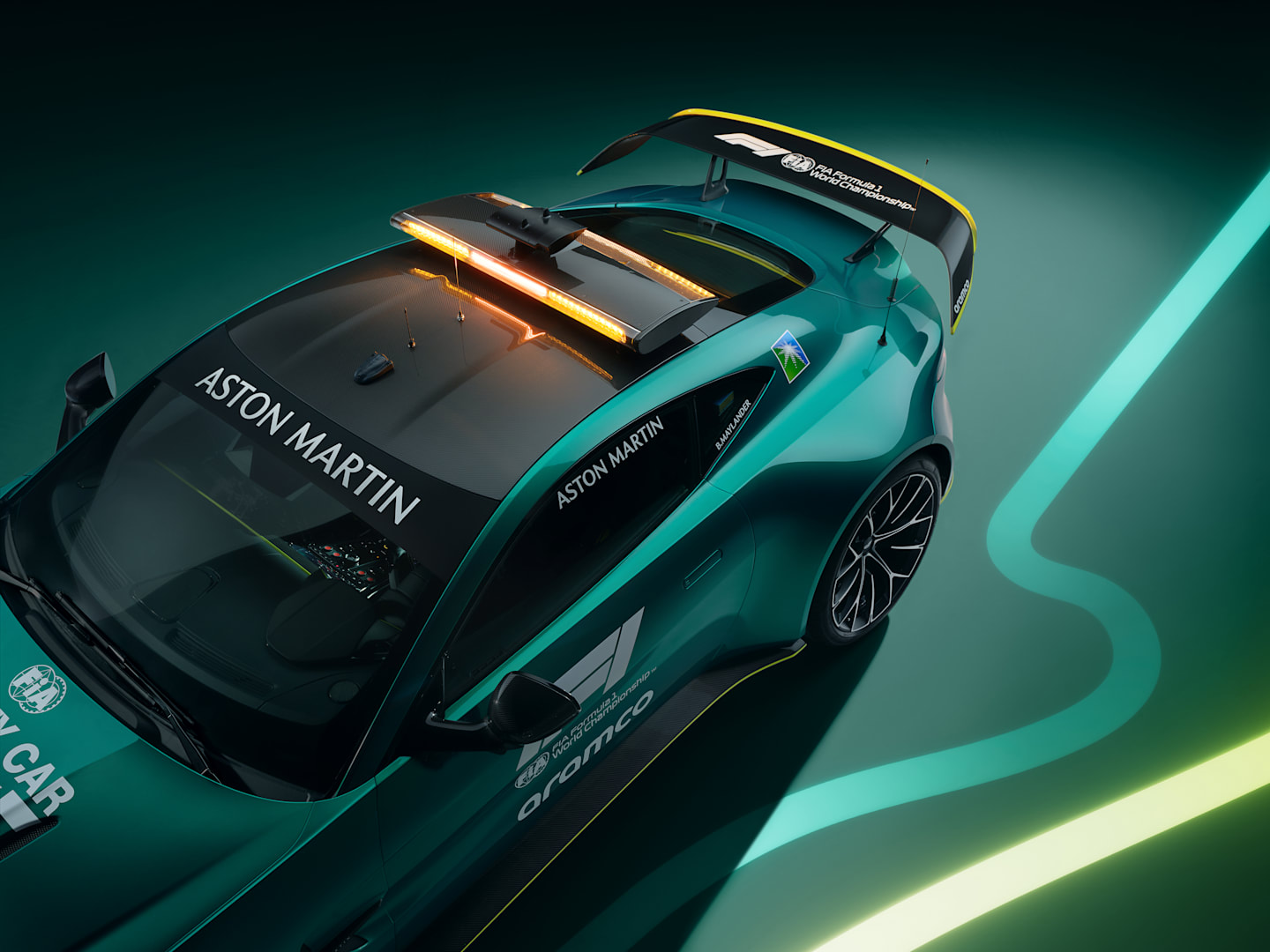
The Vantage Safety Car has become a familiar sight to fans on track
Nonetheless, Maylander adds that, surprisingly, it’s still the more old-school tech that’s his chief source of information when he’s got an incident that needs to be dealt with.
“The radio is still the most important communication tool – that's also why we have two radio systems inside, our main and a backup. It’s the most important communication to the race director, to race control where we get all our information from.
“We have TV because we want to see the race. That's very important information as well, because you can see it with your eyes: what's happened on the track, which corner. For sure, we get all this information by radio, but still if you see something, you know what's happening – if there's a lot of debris, things like that.
“So, there’s a lot of information you have to put together to make your own vision of what's happened. And then you're just waiting in the end for the radio call: if you have to deploy or not. And then it's up to race control to guide me, to give me the right information.
“We give information back to race control. That's very important because the decision is always taken by race control; they have the whole view around the track. We have to protect all drivers, all marshals, everyone who's involved in that situation, whatever happens on the track.”
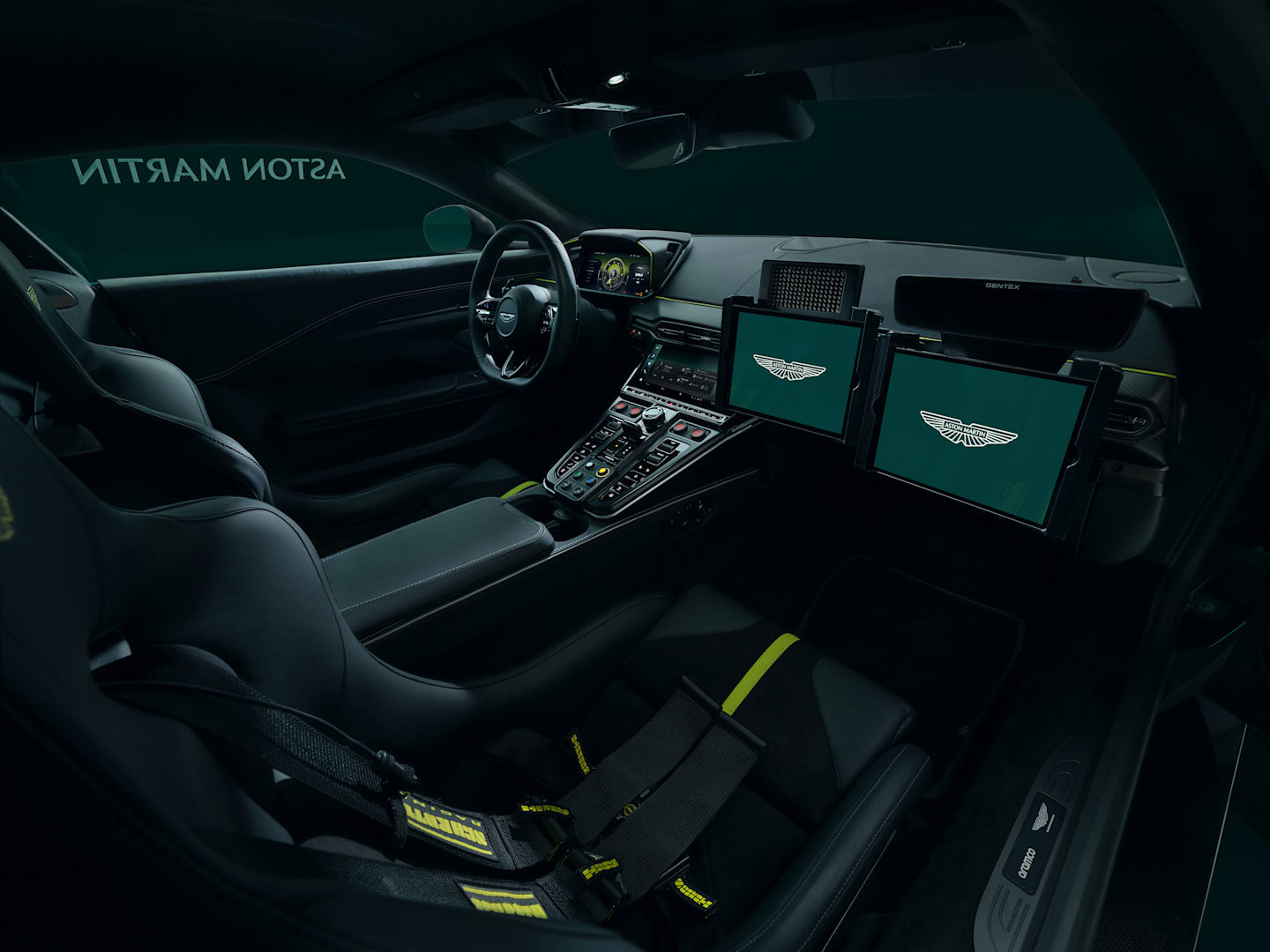
Screens inside the Safety Car help keep everyone up to date with what's happening on track
Maylander is also complemented by a team of four engineers at track, plus an additional team working remotely, with the German spending almost as much time working on his Vantage’s set-up as the racing drivers that he’s at the track to protect – and for good reason, as he explains…
“You start like in a proper first practice session of a race weekend – you start to feel the car, to set up your car,” says Maylander, whose on-track weekend begins with Thursday’s high-speed track tests.
“That's what we are doing on a Thursday, tyre pressures, these kind of things. And mostly on a Thursday, the grip level is not as high as on a Friday or Saturday or even on a Sunday. So you have to set up your car a little bit to bring the car in the right balance, to have a good, perfect feeling inside the car.
READ MORE: Vettel and Schumacher to form ‘super team’ as they sign up for popular motorsport event
“And then for sure you're going step by step on a higher level – because to drive on a higher level should be done in an easy way, so you can still be focused on what's going on around you. That's what you need as well in a race, to have a good feeling, to not feel uncomfortable in the car. So you have to be comfortable and then you can even be more focused on what you have to do in your Safety Car job. That's very important.”
Childishly (and sheepishly) I can’t help but ask Maylander if getting to drive the Safety Car is, well, fun – at least in the less high-stakes moments. Bernd laughs loudly and replies simply “absolutely!” before adding: “But for sure, one more very important thing is to not drive over the limits, because your limit should be always under 100 percent, because you're winning nothing – just do your job as good as possible and still enjoy it.”
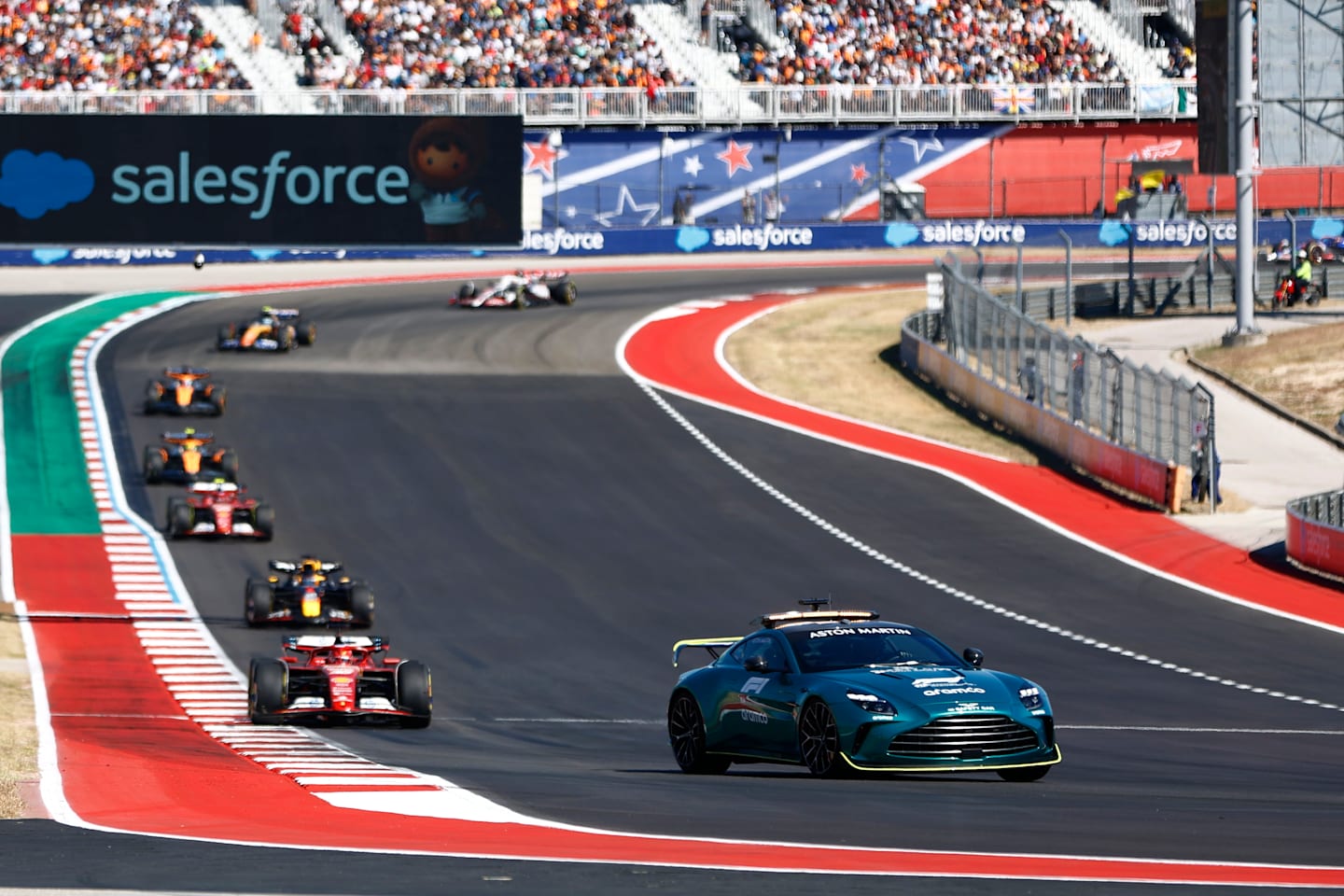
The Safety Car leads Charles Leclerc at its recent appearance in Austin
Ultimately, Maylander wouldn’t be called upon at either Baku – where a Virtual Safety Car was deemed sufficient to cover Sergio Perez and Carlos Sainz’s dramatic penultimate lap crash – or in Singapore, the first time in the race’s history where he hasn’t appeared in the race at the Marina Bay Street Circuit. He did, however, make an appearance in Austin shortly after Lewis Hamilton span out early on in the race.
Either way, though, Maylander jokes that, when he’s tasked with driving the Aston Martin Vantage over a race weekend, he’s always happy – for one key reason…
“I always say if I have the green cars with me, I feel a little like James Bond. There are some rumours…” he laughs. “No, it's fantastic – and it makes it a lot of fun.”
F1 EXPLAINS: Downforce and why F1 cars have wings – with McLaren Aero Specialist Emel Cankaya
YOU MIGHT ALSO LIKE
TechnicalF1 Unlocked TECH WEEKLY: How every F1 team reacted to the front wing flexing clampdown in Spain – and what changed on track
News Downbeat Hamilton says he learned ‘absolutely nothing’ from triple header after tough run to P6 in Barcelona
Feature SPAIN LOWDOWN: All the key moments as Piastri stars, restart chaos ensues and footballers descend on the paddock
News Hulkenberg’s Ferrari overtake in Spain a ‘pinch yourself’ moment for Kick Sauber as they eye ‘springboard’ effect
